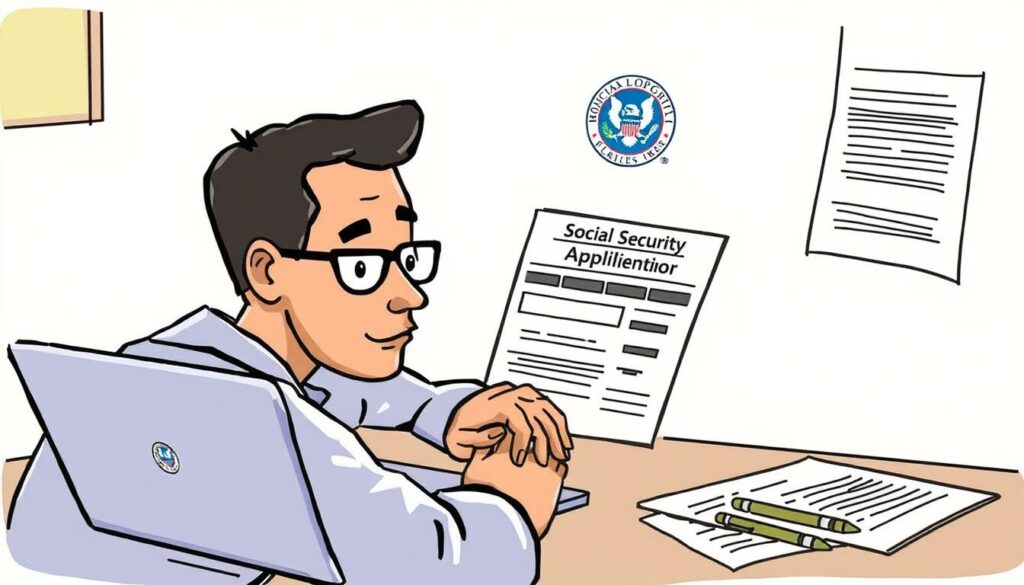Advanced Disability Benefits Estimator
Discover Your Potential Benefits
Are you curious about what disability benefits you might qualify for? Let's find out together!
Navigating the world of disability benefits can be overwhelming, especially for young adults in the United States who are unable to work due to medical conditions.

Understanding the difference between Social Security Disability Insurance (SSDI) and Supplemental Security Income (SSI) is crucial. SSDI pays benefits to disabled adults who have worked and paid Social Security taxes, while SSI provides financial assistance to those with limited income and resources.
The application process for disability benefits requires careful preparation. Young adults face unique challenges, as they may have limited work history. However, they may still qualify under special provisions.
This guide will walk you through the process, from determining eligibility to completing your application, ensuring you receive the benefits you deserve.
Understanding SSDI Benefits for Young Adults
The Social Security Disability Insurance (SSDI) program is a federal initiative that provides financial assistance to individuals, including young adults, who are unable to work due to a qualifying disability. SSDI is tied to an individual’s work history, providing benefits not only to the individual but also to certain family members if they have worked and paid Social Security taxes.
What is Social Security Disability Insurance?
SSDI is designed for individuals who have contributed to the Social Security system through their work but can no longer work due to a disability. For young adults, eligibility is based on both medical criteria and work credits earned. The program offers monthly cash benefits to replace lost income, with the amount determined by the individual’s lifetime average earnings covered by Social Security.
How SSDI Differs from SSI
Supplemental Security Income (SSI) is a needs-based program that doesn’t require a work history but has strict income and resource limits. Unlike SSDI, SSI provides assistance based on financial need rather than work credits. Young adults may be eligible for both SSDI and SSI if they meet the respective criteria, known as receiving “concurrent” benefits.
| Program | Eligibility Criteria | Benefits |
|---|---|---|
| SSDI | Work history and disability | Monthly cash benefits based on earnings record |
| SSI | Financial need and disability or age | Monthly cash benefits for basic needs |
Eligibility Requirements for Young Adults
To access SSDI benefits, young adults must satisfy certain conditions related to their age, disability status, and work history, which are pivotal in determining their eligibility. Understanding these requirements is crucial for a successful application.
Age and Disability Qualifications
Young adults must be at least 18 years old and have a medical condition that aligns with the Social Security Administration’s definition of disability. This definition encompasses the inability to engage in substantial gainful activity due to a medically determinable physical or mental impairment expected to last at least 12 months or result in death.
Work History Requirements
The work history requirements for SSDI eligibility are based on the age at which the disability occurs. For instance, individuals under 24 years old generally need 6 credits earned in the 3-year period before their disability begins. This requirement acknowledges that younger individuals may have limited work experience.
| Age at Disability Onset | Work Credits Required | Time Period for Credits |
|---|---|---|
| Under 24 | 6 credits | 3 years before disability |
| 24-30 | Credits earned between age 21 and disability onset | Varies |
| 31 and older | More than 20 credits | 40 quarters (10 years) before disability |
Medical Condition Criteria
The medical condition must be severe enough to prevent the individual from performing substantial gainful activity. The condition should either match a listing in the “Blue Book” or be of equal severity. Extensive medical documentation is required to support the claim.

By understanding these eligibility criteria, young adults can better navigate the SSDI application process and ensure they have the necessary documentation to support their claim.
How to Apply Social Security Disability Insurance Ohio

The process of applying for SSDI benefits in Ohio is designed to be efficient, with options to apply online, by phone, or in person. This flexibility ensures that applicants can choose the method that best suits their needs.
Online Application Process
The online application process is often the most efficient way to apply for SSDI benefits in Ohio, allowing you to start immediately without waiting for an appointment. To apply online, visit the Social Security Administration’s website and complete the disability benefit application, which typically takes 1-2 hours but can be saved and continued later if needed.
Phone and In-Person Application Options
For those who prefer speaking with a representative, phone applications can be initiated by calling 1-800-772-1213 (or TTY 1-800-325-0778 for hearing impaired) to schedule a phone interview. In-person applications at your local Ohio Social Security office require an appointment, which can be scheduled by phone to minimize wait times.
What Happens After You Apply
After submitting your application, you’ll receive a confirmation receipt with a confirmation number that should be kept for reference throughout the process. The Social Security Administration will review your application, which typically takes 3-5 months for an initial decision, though processing times may vary based on the complexity of your case and current backlog.
Essential Documentation for Your SSDI Application
To successfully apply for SSDI, you must have certain essential documents ready. Gathering comprehensive documentation before beginning your application can significantly streamline the process and reduce delays in receiving benefits.
Personal Information Documents
Personal information documents are critical for verifying your identity and eligibility for SSDI benefits. These include your Social Security number, birth certificate, and proof of U.S. citizenship or legal residency. If applicable, marriage or divorce records should also be provided. For dependent children who may qualify for benefits on your record, their birth certificates and Social Security numbers are required.
Medical Records and Evidence
Medical records form the foundation of your disability claim. Detailed documentation from all healthcare providers who have treated your condition is necessary. Essential medical evidence includes diagnostic test results, treatment records, medication lists, and statements from physicians about how your condition limits your ability to work.
Employment and Tax Documents
Employment and tax documents demonstrate your work history and contributions to Social Security. These include W-2 forms, tax returns, and a detailed list of jobs held in the past 5 years. If you’ve received workers’ compensation or other disability benefits, documentation of these must be provided as they may affect your SSDI payment amounts.
| Document Type | Description | Importance |
|---|---|---|
| Personal Info | Social Security number, birth certificate, citizenship proof | High |
| Medical Records | Diagnostic tests, treatment records, physician statements | High |
| Employment & Tax | W-2 forms, tax returns, work history | High |
Conclusion
For young adults with disabilities, applying for SSDI benefits can be a crucial step towards financial stability. The application process requires careful preparation and thorough documentation. While it may take several months to receive benefits, exploring concurrent benefits like SSI can provide additional support. Once approved, SSDI recipients can expect monthly payments and Medicare coverage after 24 months, significantly improving their quality of life.
